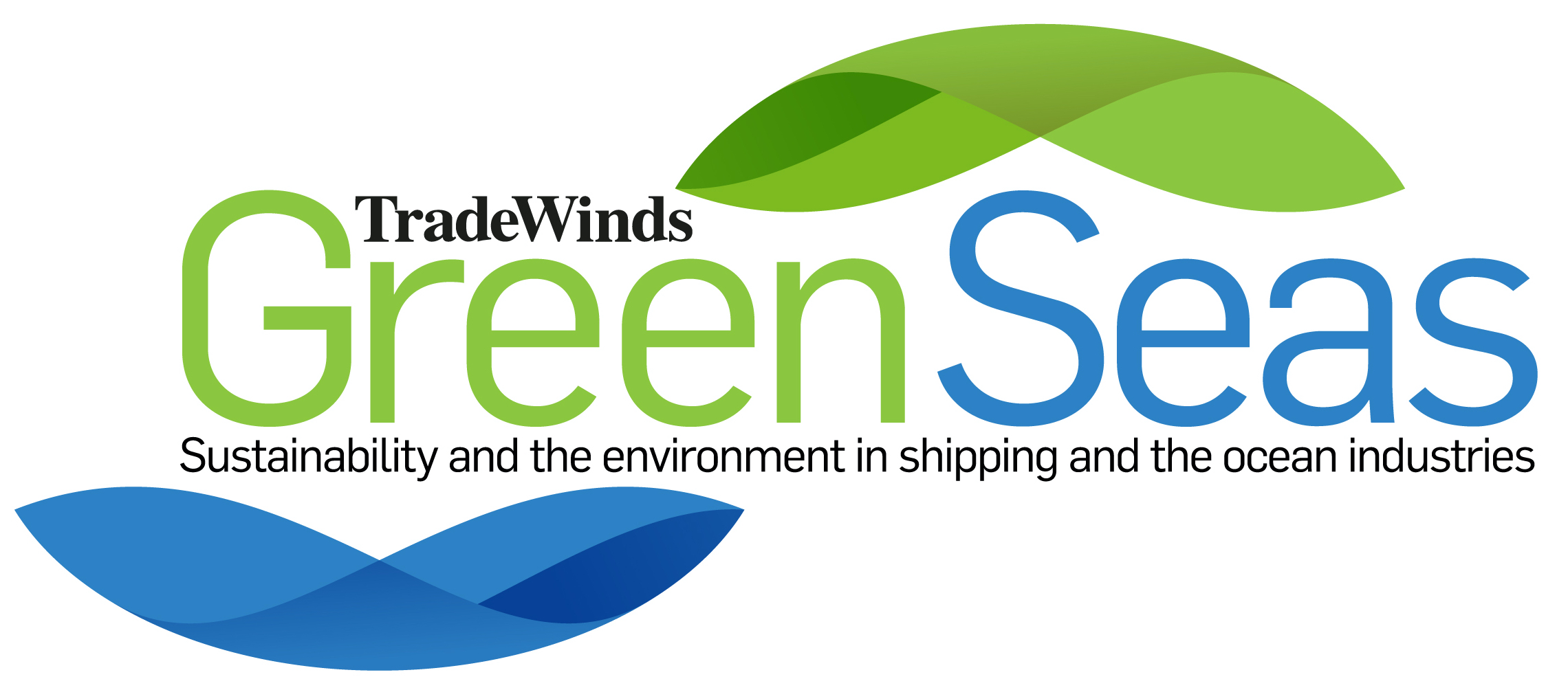LNG’s return to dominance as the main alternative fuel for newbuilding vessels puts the spotlight on its greener versions — particularly liquefied biomethane.
Also known as bio-LNG, liquefied biomethane has the possibility of being considered a carbon-negative fuel when its full lifecycle emissions are factored in, as experts explain in TradeWinds’ Green Seas podcast.
And in the FuelEU Maritime law that will enter force next year in the European Union, a carbon-negative ship can share the benefits of that with other vessels.
The rules, which place gradually tightening carbon-intensity limits on ships, allow shipowners to pool their vessels to meet the targets.
Alexandra Veroude, an analyst at environmental commodity trader STX Group, told a webinar by insurer NorthStandard that a vessel using a blend of 30% liquefied biomethane with 70% fossil LNG will have enough emissions reductions to bring a pool with 30 ships powered by standard very-low sulphur fuel oil into compliance with FuelEU Maritime at the beginning.
“The European Commission has not restricted the ability to spread these excess emission savings across vessels to the one company,” she said.
They are able to share these savings with numerous vessels across various companies.
“So under this mechanism, the EC recognises that not all shipowners have a willingness or ability to access alternative fuel-capable engines, or have tested their engines for the operation of alternative fuels,” Veroude said.
Sharing the benefits
“Not all shipowners are able to change their operations or logistics, or have the ability to access alternative fuels in the locations that they bunker, but pooling allows these vessel owners to gain exposure to the effectiveness of bunkering alternative fuels and bio-LNG if they don’t operate an LNG vessel.”
Last year, methanol took the newbuilding orderbook by storm, becoming the leading alternative fuel. But this year, the pendulum has swung back to LNG. Its wider availability and improved pricing pushed the industry back to choosing it as a fuel of choice to deal with tightening greenhouse gas regulations.
Although environmental groups complain about LNG’s methanol emissions, shipowners are still betting that the fuel will meet regulatory muster.
Like methanol and other alternative fuels, LNG can have a better greenhouse gas footprint if it is produced in a greener way, either with biological waste to make liquefied biomethane or renewable energy to produce e-LNG.
TradeWinds has reported about how biomethane producers are stepping up their volumes, particularly in Europe, where shipping demand is estimated at 8m tonnes by 2030 as tougher regulations come into play.
Commodities company Uniper is selling bio-LNG at the port of Rotterdam.
United European Car Carriers, a unit of Japan’s giant NYK Group, has teamed up with Titan Clean Fuels to fuel its ships with liquefied biomethane.
And S&P Global reported that Hapag-Lloyd is holding a tender for what could be 250,000 tonnes of bio-LNG as it gears up to fill its natural gas-powered ships with the fuel and to set up a green shipping service with the Zero Emissions Maritime Buyers Alliance.
Steve Esau, chief operating officer of industry lobby group SEA-LNG, described LNG as following the same decarbonisation path as other alternative fuels.

Synthetic LNG, also known as e-LNG and produced from green hydrogen made from renewable electricity, is the end goal.
“We start with fossil, then what’s the next thing that’s available? The lower-carbon — or in the case of LNG it almost can be a negative-carbon — solution is the bio-form … or liquefied biomethane,” he told Green Seas.
Limitations
Esau acknowledged that any form of energy derived from biomass is, almost by definition, limited.
But electrofuels such as e-LNG are expensive to scale, and the price dynamics make them a hard pill to swallow for shipping.
Although bio-LNG cannot solve all of shipping’s decarbonisation needs, it is abundant enough to make a big dent.
Esau said there is 30m tonnes per annum of biogas production capacity worldwide.
“Cast your eyes forward to about 2050 — I know it’s a long way off,” he said.
“We see, in terms of the global growth of biomethane production and looking at the demands from other sectors, liquefied biomethane could meet about 13% of shipping’s total energy demand — so a significant resource more likely to be used as a drop-in [fuel].”
As the International Maritime Organization works on new policy measures to meet its decarbonisation targets and the EU implements FuelEU Maritime, that growing resource could be a tool in getting to regulators’ goals.

And with LNG much more bedded into the global fuel supply network than other alternative fuels, there are already ample ports with infrastructure to deliver the fuel to vessels.
Regulation needed
While some ship operators are pushing ahead with bio-LNG, Esau believes that regulation is needed for it to take off.
“That’s what we see amongst our members,” he said. “The fuel suppliers are saying, ‘We can provide the biomethane. We can provide the synthetic methane, but you guys need to provide the demand signal’.”

But voluntary commitments are a weak demand signal. “You really have to have formal regulation,” Esau stressed.

LNG was originally introduced in shipping in response to regulations on sulphur emissions. But carbon regulation is already having an impact on further adoption, especially as Brussels gets ready to implement FuelEU Maritime alongside its emissions trading regime.
Veroude said the EU Emissions Trading System’s cost of just €70 ($76) per tonne of carbon today is not a big enough stick to change decision-making.
But FuelEU Maritime is different. Penalties for exceeding carbon-intensity limits stand at €2,400 per tonne.
When the regulation comes into force in January, LNG-fuelled vessels with high methane slip may not meet its requirements.
But using lifecycle analysis to factor in the full well-to-wake emissions of a ship, bio-LNG may have a leg up under the regulation, even with regulatory carrots to boost what are called renewable fuels of non-biological origins, or RFNBOs.
Carbon-negative manure
“Manure-based biomethane fuels such as bio-LNG achieve a negative emissions factor, and this can be an extremely competitive option, even against an RFNBO-based fuel, which receives a two times multiplier to incentivise its take-up,” Veroude said in the NorthStandard webinar.
That means using bio-LNG can be better than net zero.

Environmental groups still complain that even with bio-LNG, there is methane slip from the engines of ships.
But industry voices point out that progress is being made in efforts to combat that.
There are already engines with significantly lower methane slip.
“And for those engines which do have significant levels of slip, then you can see a clear trajectory that the problem is being solved. So I think there’s growing confidence that, within the next few years, it really won’t be an issue,” Esau said.
Esau and others believe uptake of synthetic e-LNG is going to be driven by the cost of the hydrogen feedstock.
“That’s a common challenge for all the renewable fuels that are commonly being discussed — the scaling of renewable electricity production and electrolysis,” he said.
SEA-LNG is looking to 2030 for e-LNG to play a significant role, he said.






